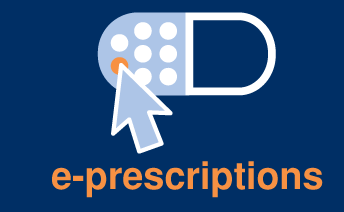 Exploring the Recent Increase in e-Rx
Exploring the Recent Increase in e-Rx
E-prescriptions are on the rise among the medical community, and not by just a little. According to a study published by the American Journal of Managed Care, e-prescribing by physicians increased an amazing 41% between 2008 and 2012. This means that just over half of all American physicians are utilizing e-prescriptions on a regular basis, with more expected to follow.
Why are e-Prescriptions Increasing so Dramatically and Quickly?
The most obvious reason why many doctors are making use of electronic prescriptions is simply because the technology is available where it wasn’t before. Beyond that, however, e-prescribing offers a number of advantages for both physicians and patients. Most pharmacies appreciate the efficiency that e-prescriptions offer as well.
Some of the benefits experienced by physicians who utilize e-prescribing include:
- Higher profits. Several incentive programs designed to encourage doctors to move toward e-prescribing offer these physicians bonuses for prescribing electronically. In addition, any doctors who did not start making the move to this new method of prescribing by the end of 2012 may be subject to a small penalty fee for not conforming to the new standards of best practices.
- Better integration with electronic health records. With the old method of prescribing, physicians would have to hand-write a prescription, copy it into the patient file, and then flip through pages of notes to determine medication history at the next visit. With e-prescriptions, it’s pretty much a one-time task that integrates seamlessly with computerized patient records.
- Improved efficiency. With e-prescriptions, doctors do not have to spend time on the phone with pharmacies to call in orders. Likewise, pharmacies do not have to call physician’s offices for clarification of the prescription due to unclear handwriting or dosing instructions, which further takes up the time of the physician.
What are the Patient Benefits of e-Prescriptions?
Doctors and pharmacies are not the only to benefit by the use of e-prescribing. Patients receive a number of benefits as well, including:
- Decreased wait time for filling prescriptions. When a patient receives a hand-written prescription, he or she must physically deliver the script to the pharmacist, and then wait for it to be filled. With e-prescriptions, in many cases, the prescription is filled during the time it takes for the patient to travel from the doctor’s office to the pharmacy, eliminating the need for the patient to stand around waiting on his or her medications.
- Better safety. e-Prescriptions help improve patient safety because it helps to eliminate errors in filling the script. Drugs that have similar names but very different applications are easy to misinterpret on a hand-written script, but are plainly printed in uniform fonts on electronic prescriptions. Dosage, concentration, and number of refills are also clear and easy to read. Clarity is crucial for patient safety when dealing with powerful drugs.
- Improved compliance. This advantage is shared by patients and physicians, but benefits the patient most directly. Improved convenience of filling prescriptions often leads to better compliance in picking up and taking the medication. One cannot heal optimally if one does not follow the doctor’s orders — patient compliance is integral to patient improvement.
E-Prescribing is definitely here to stay, and the numbers of doctors and pharmacies using the system is only expected to increase. Solutions to barriers that restrict use of this system, such as inadequate infrastructure in rural areas, are in the works and, hopefully, will see e-prescriptions becoming the universal norm in the near future.
About the Author: Michelle Rebecca is a health writer, freelancer, and Wakefield market research professional . Follow her on Google+.
